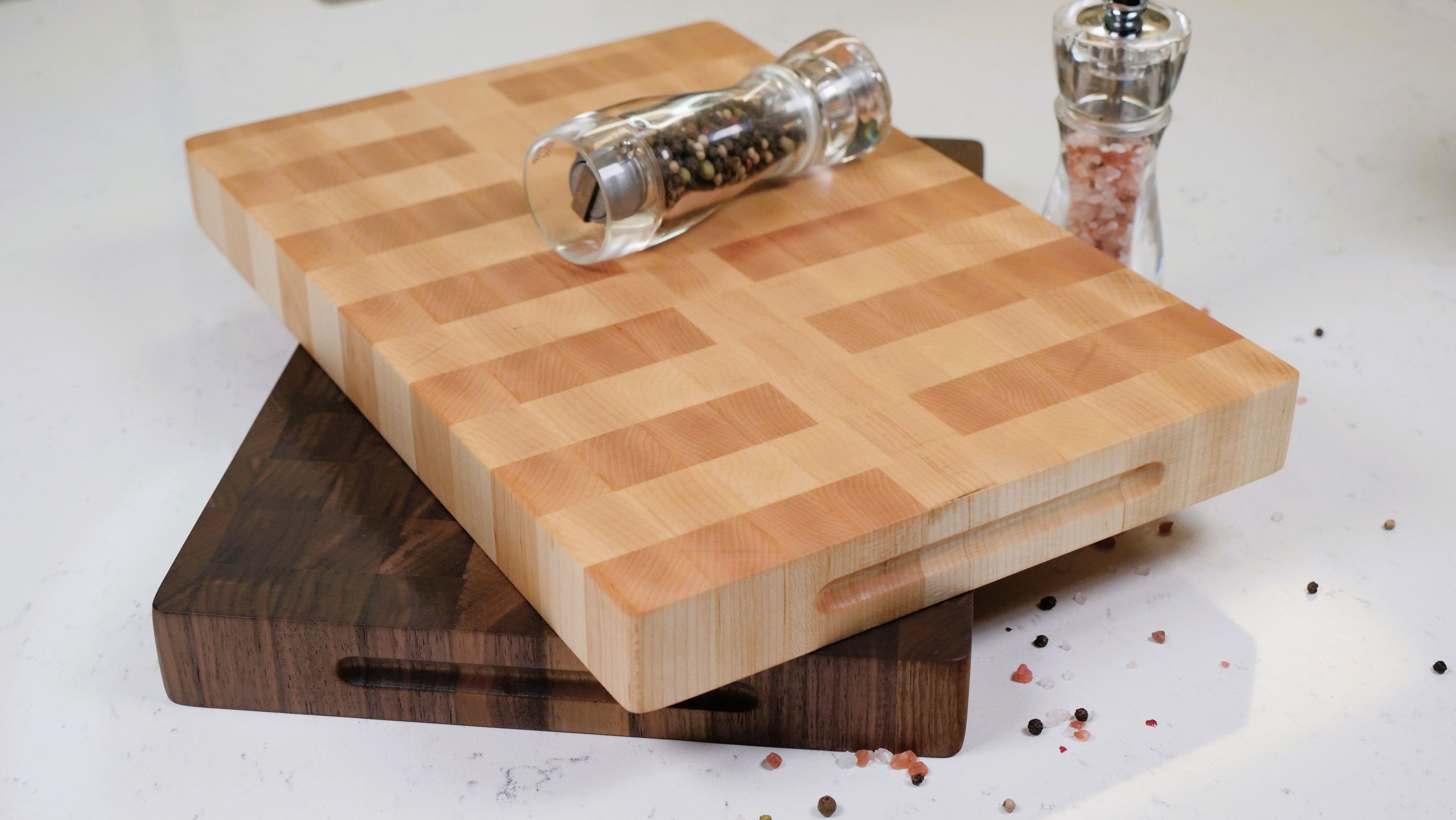If you’ve ever shopped for a high-quality cutting board, you’ve probably noticed that two woods come up again and again: maple and walnut. Both are classics, both are gorgeous, and both have their loyal fans. But which one is right for you? Let’s break it down.
Maple Cutting Boards
The classic workhorse.
Maple is one of the most popular choices for professional kitchens. It’s tough, durable, and has a light, creamy tone that brightens up your countertop.
Pros:
-
Very hard and scratch-resistant, which means it stands up to years of chopping.
-
Light color makes knife marks less noticeable.
-
Generally more affordable than walnut.
Cons:
-
Harder surface means it’s a little less forgiving on knife edges.
-
Shows stains (like beet juice!) more easily than darker woods.
Walnut Cutting Boards
The elegant showstopper.
Walnut is rich, dark, and downright classy. It’s the board you bring out when you want your kitchen to look like a magazine spread.
Pros:
-
Softer than maple, which is gentler on knives.
-
Gorgeous dark color hides stains and knife marks.
-
Instantly adds warmth and elegance to your kitchen.
Cons:
-
Slightly softer surface can show wear a bit faster.
-
Usually more expensive than maple.
Which One Should You Choose?
-
Pick maple if you’re after a rugged, all-purpose board that will see heavy daily use and still look fresh for years.
-
Pick walnut if you love the dark, dramatic look and want something a little easier on your knives.
Honestly? You can’t go wrong with either—some cooks even keep both on hand: maple for heavy duty prep, walnut for serving and presentation.
At Pinocchio Workshop, we use sustainably harvested maple and walnut to create boards that are not only durable but also beautiful enough to live on your counter. Whether you’re a weekday meal prepper or a weekend entertainer, the right board makes all the difference.
So… are you Team Maple or Team Walnut?
